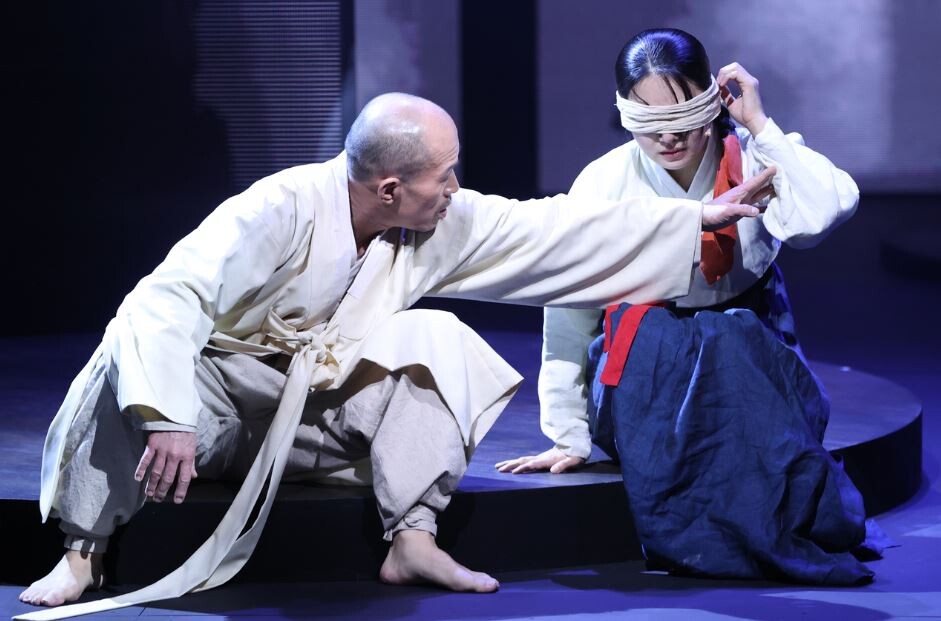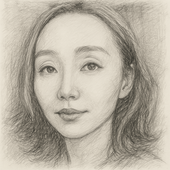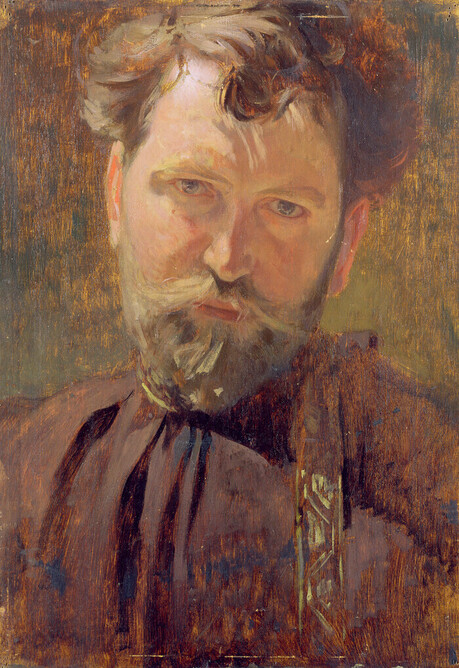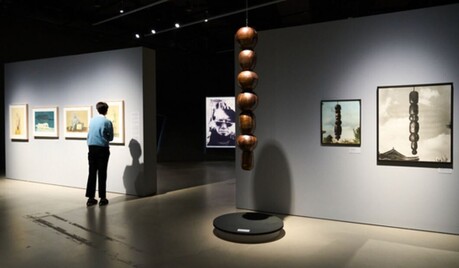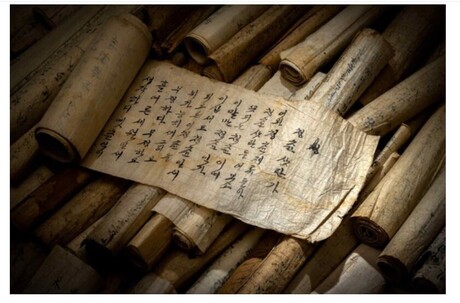A dim blue light descends over the stage. A father, trembling in torment, pulls a small vial from his sleeve. With a grim calmness, he sprinkles its burning contents — cheongangsu, a caustic liquid — into his daughter’s eyes. She screams, calling for him through her pain.
The haunting moment unfolds in “Seopyeonje; The Original,” the new production at the National Jeongdong Theater of Korea, which celebrates its 30th anniversary this year by revisiting one of the nation’s most enduring artistic legends.
A Tale Etched in Sound and Sorrow
The story of Seopyeonje first appeared in 1976, in author Yi Chung-jun’s novella, a modern parable about art, sacrifice, and devotion. It later reached mythic status through Im Kwon-taek’s 1993 film adaptation, which became the first Korean film ever to surpass one million viewers, reshaping the country’s cinematic landscape.
That film — often cited as the moment Korean cinema found its soul — captured not only the tragedy of a family destroyed by obsession but also the spirit of han, the uniquely Korean sentiment of sorrow and endurance. The character of the blind singer Song-hwa, portrayed by Oh Jung-hae, remains one of the most iconic roles in Korean film history, while musician Kim Soo-chul’s haunting score embedded pansori’s ancient rhythm deep into modern memory.
Returning to the Roots of Sori
Now, director Ko Sun-woong and music director Han Seung-seok have brought Seopyeonje back to its primal form — as a “sori drama,” where the drumbeat and the human voice take center stage.
“Seopyeonje has been my life’s work,” said Ko. “When I first read Yi’s novella, it felt as if a whole universe existed within that small room where the father and daughter lived through their sound. It was as if life itself became visible through song.”
This new version strips away theatrical embellishment, allowing the story’s essence — the transformation of pain into art — to breathe. The stage revolves in a slow, circular motion, evoking both the ceaseless path of a wandering pansori troupe and the endless cycle of life and devotion.
Between Cruelty and Devotion
The narrative follows a father who blinds his daughter so that she will never abandon her art, as her half-brother once did. Asked whether such brutality alienates empathy, Ko replied, “He was cruel, yes, but also human. He was a man consumed by the impossible desire to perfect his sound before death. His violence came from his devotion — the tragic devotion of an artist who believed that art demanded everything.”
For Ko, the fact that Yi’s characters are nameless — simply “the father,” “the girl,” “the young man” — makes them universal.
“It feels like an old wandering tale,” he said. “Once, there was a father and a daughter, and they roamed through the land singing. They were nameless wanderers of sound — that, to me, is the true soul of Seopyeonje.”
Legacy on Stage and Screen
The enduring legacy of Seopyeonje lies in its ability to bridge forms — literature, film, pansori, and theater — while preserving the essence of Korean identity. The film version immortalized the landscape of Korea’s southern provinces, capturing both the lyricism of pansori and the moral austerity of devotion.
Three decades later, the new production brings the story full circle, returning from cinema to live performance — to breath, drum, and voice. The father is double-cast between Lim Hyun-bin, music director of the Namwon Municipal Gugak Orchestra, and Ahn Yi-ho of the crossover band Leenalchi. The daughter, Song-hwa, is played alternately by Kim Woo-jung of the National Changgeuk Company and Park Ji-hyun, a pansori major at Seoul National University.
As the subtitle “The Original” suggests, Ko’s version is not a remake but a reclamation — of voice, of culture, and of artistic memory.
“Pain and beauty are inseparable,” Ko said. “That is what Seopyeonje has taught us for half a century. To sing is to endure, and to endure is to become art.”
“Seopyeonje; The Original” runs through November 9 at the National Jeongdong Theater in Seoul. English subtitles are provided on both sides of the stage.
SayArt.net
Kelly.K pittou8181@gmail.com


